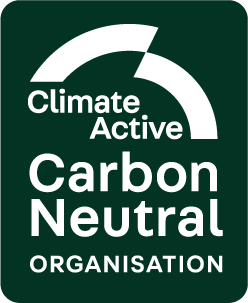Carbon Neutral
Wyndham City have been certified carbon neutral for its operational emissions since 2023 via the Federal Government’s Climate Active certification scheme. This is a significant step in Council’s commitments to addressing the climate crisis and meeting the Resilient Wyndham target of becoming carbon neutral by 2023.
To achieve this Council have made significant improvements of the energy efficiency of our buildings, fleet and equipment and shifting to low or zero carbon energy sources and products. This includes:
- Sourcing 100% of its electricity demand from renewable energy sources, saving 15,000 tonnes of greenhouse gasses a year.
- Installing 3.18MW of solar PV and 414kWh of battery storage at council buildings, saving approximately 70,000 tonnes of greenhouse gas emissions and $20.3 million in electricity fees over the 20-year lifespan of the solar systems.
- Changing over 20,600 streetlights to energy efficient globes, saving over 65,000 tonnes of greenhouse gas emissions and $41 million in electricity fees over the 20-year lifespan of the globes.
- Replacing council fleet vehicles with low or zero carbon emission technologies, including nine electric vehicles and more than 60 hybrid electric vehicles.
- Investing in Council electric vehicle charging infrastructure that can provide 100% renewable energy for electric fleet vehicles.
- Replacing petrol-powered equipment including lawn mowers, whipper snippers and other power tools with electric equivalents.
- Implementing sustainable design principles into Council’s capital works building program. For example, one of Council’s new buildings in FY23-24 (Truganina Community Centre) achieved a 109% reduction in whole-of-life emissions compared to a reference building.
Learn more about the programs and projects that help achieve carbon neutrality here:
- Wyndham Solar City Project & Wyn-R Program
- Lighting the West
- Environmentally Sustainable Design Framework
Victorian Energy Collaboration (VECO)
Wyndham City Council is leading the way as one of 51 Victorian Councils to form the largest ever emissions reduction projects by local government - Victorian Energy Collaboration (VECO). By using renewable energy, the 51 participating local governments will save a total of 260,000 tonnes of greenhouse emissions. As part of this project Wyndham is sourcing 100% of its electricity demand from renewable energy sources, saving 15,000 tonnes of greenhouse gasses a year.
The project began in July 2021, initiated by the Western Alliance of Greenhouse Action - WAGA and other Victorian greenhouse alliances, to provide the VECO group of Councils with renewable energy generated at wind farms in Victoria. The renewable energy is being used to power council-owned infrastructure, including town halls, sports grounds, community venues, leisure centres and streetlights.
For more information, please visit: Victorian Energy Collaboration (VECO)
The Wyndham Solar City Project and Wyn-R Program
Wyndham Solar City Project has been designed to reduce the energy demands and greenhouse emissions of the municipality’s community buildings through the installation of solar panels and cutting-edge battery technology.
The program began in 2015, with solar PV panels currently installed across 75 Council owned and managed buildings. The focus for the program has primarily been on high use energy sites, community centres, kindergartens and sporting pavilions throughout the Wyndham municipality.
This Large-Scale Solar Project is considered to be one of the largest rollouts of commercial-scale, rooftop solar by local government in Australia. With over 2.78MW of solar PV and 373kWh of battery storage installed to date.
Council has a commitment to continue the rollout of renewable energy systems under the new Wyn-R Program (Reduction, Renewables, Resilience). With an eye to the future, this next phase of capital infrastructure works will focus on the many new Council community buildings being planned and constructed across our municipality.
Lighting the West
Starting in 2014, the original Lighting the West project was a partnership between Wyndham City, Moonee Valley, Maribyrnong and Hobsons Bay to bring sustainable street lighting to the west. Wyndham is continuing this program and has committed to upgrading all inefficient streetlights on council roads.
So far, the changeover of over 20,600 streetlights with energy efficient globes is saving over 3,260 tonnes of greenhouse gas emissions per year and Council $41.2 million in electricity fees over the 20-year lifespan of the new globes.
Environmental Sustainable Design
Wyndham City’s Environmentally Sustainable Design Framework aims to reduce the environmental impact of our buildings while increase comfort of the buildings. This is done through:
- Improving energy performance
- Reducing water use
- Using renewable energy
- Using environmentally responsible construction techniques
- Improving indoor air quality
Saltwater Community Centre Case Study is a great example of Environmentally Sustainable Design.
